Iran’s Security Forces Continue Arresting Journalists
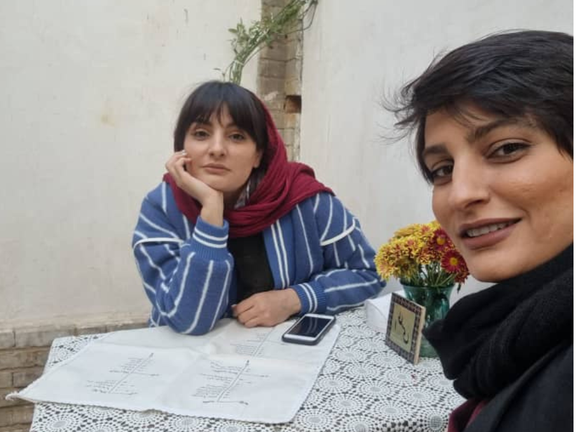
The Islamic Republic is still arresting journalists who reported the murder of Mahsa Amini, a young woman whose death in police custody sparked a nationwide protests.

The Islamic Republic is still arresting journalists who reported the murder of Mahsa Amini, a young woman whose death in police custody sparked a nationwide protests.
Elnaz Mohammadi, the social service editor of Ham-Mihan newspaper has been arrested after being summoned to the notorious Evin prison in Tehran, reports from Tehran say.
Elnaz Mohammadi, is the twin sister of Elaheh Mohammadi, who was arrested on September 29 and is still behind bars.
Nilufar Hamedi and Elaheh Mohammadi are the two journalists who reported the death of Mahsa Amini and her funeral.
Earlier, Masoud Setayeshi, Spokesman for Judiciary had said the two detained journalists are accused of “conspiracy to commit a crime against national security and propaganda against the establishment” and their case is about to be finally decided.
Elnaz Mohammadi previously wrote on the fortieth day after Amini’s death that "No reporter attended the ceremony. When people arrived at the cemetery in Saqqez, Kordestan, no media representative was there except for those who were recording the event by their cell phones.”
The pressure on the journalists, who reported Amini’s death comes as the Islamic Republic has not yet responded to the complaint filed by her family.
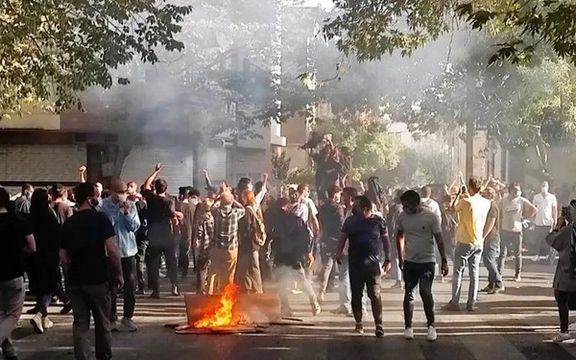
Iranian protesters chanted slogans on Saturday and held meetings with the released political prisoners, as some set fire to government street banners.
Videos received Saturday by Iran International show that people in Tehran, Shiraz, Bandar Abbas and Karaj chant "Death to the dictator" from their windows.
The destruction of banners and symbols of the Islamic Republic also continued on Saturday. A video sent from Karaj west of Tehran shows protestors set fire to images of Supreme Leader Ali Khamenei and the founder of the Islamic Republic Ruhollah Khomeini.
Protesters also paid homage to the people killed by regime forces by visiting their graves.
A group of teachers and activists visited Keyvan Samimi, a veteran journalist recently released from prison, and expressed their support for Farhad Meysami, a political prisoner who is in a dire physical condition due to his long hunger strike.
While many Iranians have been killed by regime agents, pictures of Ali Khamenei with young girls were released Saturday to present a kind image of him.
Masih Alinejad, a well-known Iranian journalist and activist, said that Iran’s dictator is seen brainwashing young girls. It reminds me of my childhood.
“This regime took us, women of Iran, hostage from the age of seven and wrote its own ideology on our bodies. The free world must take a strong action against this child abuse,” she wrote in a tweet.
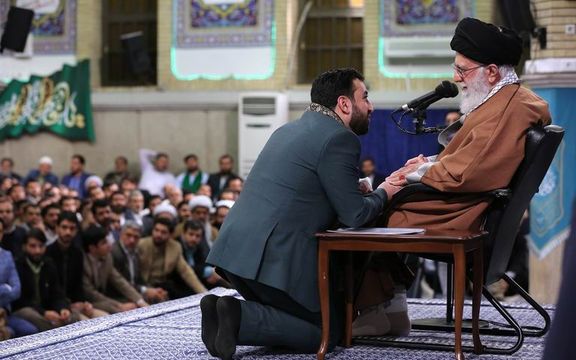
Iran’s Supreme Leader Ali Khamenei has agreed to pardon some prisoners and reduce sentences for those arrested during antigovernment protests in recent months.
Government media reported Sunday that Khamenei “agreed” with a proposal made by the country’s Judiciary to take what appears to be a political move to show clemency after hundreds were killed and around 19,000 arrested.
It is not clear from the announcement how many or which prisoners will be pardoned and whose sentences will be reduced. While thousands of young and teenage protesters were arrested in street demonstrations, hundreds of political activists, journalists and writers or artists have also been detained.
In a letter Judiciary chief Gholam-Hossein Mohseni Ejei sent to Khamenei young protesters are highlighted, with the caveat that they “were deceived by enemy propaganda,” and since then have expressed remorse.
Khamenei's move comes at the 44th anniversary of the Islamic Republic, as a move to rescue the image of the regime amid a grim economic crisis and mass public rejection of the political system he presides over. During five months of unrest, protesters unequivocally have been demanding regime change, not partial reforms.
Khamenei gave an early signal in the protests that government officials should label the protests as a foreign conspiracy. Since then, the protests are called “riots” and “enemies” are blamed for instigating the popular uprising. The term ‘enemy’ or ‘enemies’ refers to the United States and its allies.
Many protesters were forced under severe tortures to confess to acts that they did not commit, but they might have signed documents expressing regret. The move can be another tactic to force more dissidents to apologize and sign papers pledging to refrain from further antigovernment protests or even making critical comments.
Although Reuters reported that "tens-of-thousands" will be released, there is no such reference in the official print media. The agency probably quoted a claim made on state television.
Some of the conditions for being pardoned are mentioned in the announcement, including no record of spying for a foreign country, no connection with foreign intelligence services, not facing a charge of murder and no accusation of destroying public property.
However, if a person shared a simple video of protests on social media, the Islamic Republic’s intelligence and the Revolutionary Guard’s secret services easily label it as collaboration with a foreign enemy. There have been numerous cases of a simple social media message sent to someone abroad used against detainees as proof of espionage.
The Islamic Republic is facing a serious political deadlock, with its popularity at an all-time low around 15 percent according to recent polls and with over 8- percent of the population agreeing with regime change.
The regime is also facing serious international isolation particularly by Western countries, partly because of its violent and deadly repression, and also because of its move to supply kamikaze drones to Russia, which are being used against Ukraine.
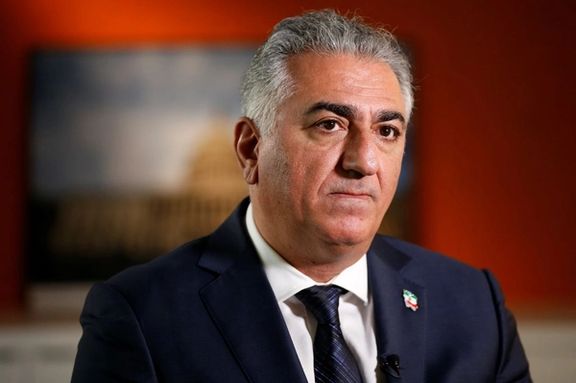
Exiled Prince Reza Pahalavi has called on Iranian expats to take part in rallies around the world planned for February 11, asking them to turn the event into “the most inspiring day on the calendar of Iran's revolution.”
Activists have planned mass protests for next Saturday, which coincides with the 44th anniversary of the Islamic Republic, established in February 1979.
“Many of you are preparing to participate in the rallies and marches planned for February 11... With your commitment, this revolution, which began nearly five months ago in the name of Mahsa, and for Women, Life, and Freedom, will continue undeterred in its path to bring an end to the forty-four years of oppression and misery brought upon our Iran by the calamitous events of 1979,” Pahlavi said in his statement shared on social media.
Iran has been the scene of anti-regime protests since mid-September when the 22-year-old Kurdish girl Mahsa Amini was killed in police custody for not wearing “proper hijab”.
“I invite all of you, my compatriots, to make this year’s February 11th the most inspiring day on the calendar of the Iranian revolution and with even greater solidarity and unity, to convert further support and energy to our compatriots inside Iran,” stressed Reza Pahlavi.
He went on to say that “my request to you is that…you offer a single and strong voice in support of the Iranians revolution to the media, societies, and politicians in your country.”
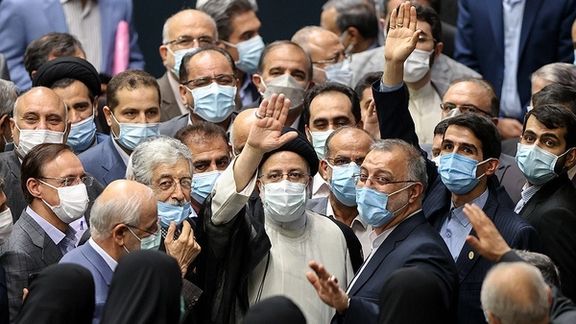
Amid a legitimacy crisis for Iran’s regime there are signs that reformist figures are being allowed to speak out possibly as a safety valve to save the system.
As parliamentary elections next year are on the horizon, the regime will have a hard time to have any sort of vote resembling at least a limited choice, unless it allows some reformists to run for seats.
Some conservatives acknowledge the need for essential reforms in the country's political system, and the core of the regime under Supreme Leader Ali Khamenei might consider ending the isolation it has imposed on reformists.
Influential conservative politician and a member of the Expediency Council Mohammad Reza Bahonar is one of the conservatives who has pointed out the need for reforms. Bahonar said in a recent interview: "We need a second Republic," meaning that a Constitutional Assembly should be formed to determine new boundaries for the government's authority and the people's rights.
There are indications that the regime might tolerate reform-minded candidates in the upcoming elections. Members of the press have pointed out more frequent public appearances by former President Hassan Rouhani. He recently met with a like-minded press corps of moderate and reformist journalists and media owners. Meanwhile, he has been speaking out about political issues.
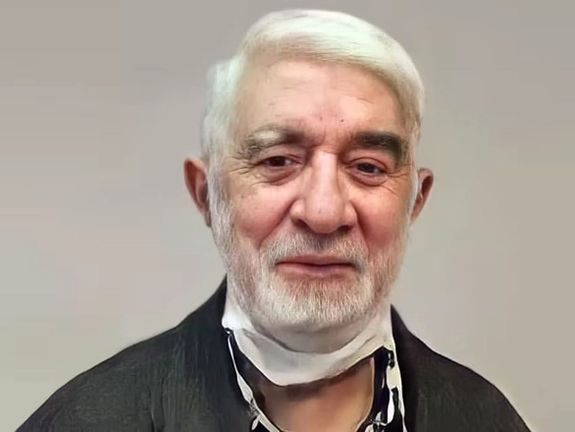
In one of his latest political remarks, Rouhani said that "a minority government cannot solve the country's problems." His characterization of Raisi's all conservative administration and the ultraconservative parliament as a "minority government" was reminiscent of his well-known art of tact and dry sense of humor.
There are other reform-minded contestants too for the next election. They are politicians such as Mostafa Tajzadeh who is in jail, and former Prime Minister Mir-Hossein Mousavi who has been under house arrest since 2011. However, if Khamenei is going to allow reform-minded politicians to run for key positions, he is highly unlikely to settle for anyone known to be more of a reformist than moderate conservative Hassan Rouhani.
On Saturday, February 4, Tajzadeh issued a long statement calling for constitutional reforms, i.e, preserving and beautifying the Islamic Republic.

On the same day, Mousavi also introduced his version of a call for constitutional change, which could be summarized as holding a free and fair referendum on changing the constitution or writing a new one, if necessary, forming a constitutional assembly, holding another referendum on the assembly's ratification, establishing a political order based on rule of law and the people's will. Mousavi’s call was clearly more radical, as he declared that the regime cannot be reformed.
These developments coincide with some conservatives also emphasizing the need for reform moves to boost the regime’s legitimacy.
Conservative politician Bahonar, asking for reforms said that protests have not really ended, and warned that after the protests recede, the regime should not forget about the people's grievances and demands, although “we tend to forget about their complaints as soon as the situation calms down."
He said, as the country gets closer to a parliamentary and an Assembly of Experts election next year, “we need to remember that an election without the presence of our rivals would be meaningless.”
He called the recent protest "a hybrid war against the Islamic Republic" waged by Europe, the United States and international media and political forums. He also acknowledged the role of Iranian expats and celebrities in the protests. Nevertheless, he ignored hundreds of thousands of Iranians who took to the streets for over five months.
Bahonar said that foreigners were prompted by recent low-turnout elections to believe that the Islamic Republic has lost its “social capital.” He added that even those who take part in pro-regime demonstrations have many complaints about the performance of the President and other state officials. He further suggested that dialogue should be maintained between the people and the government and elections should be competitive.
He also pointed out that conservatives' political rivals should not be barred from elections as it was the case in parliamentary and presidential elections in 2020 and 2021. He also criticized the regime for weakening political parties over the years.

A new report by a human rights group has confirmed earlier speculations that the Islamic Republic security forces have been systematically targeting protesters’ eyes.
Norway-based Iran Human Rights on Friday documented over 20 cases of people being blinded in one eye as a result of fire from the security agents during protests, adding that initial data indicates that young women were disproportionately represented among people who had sustained such wounds.
“Considering the volume of reports about protesters being shot in the head and face by security forces in most Iranian cities, leading to many, including a significant number of young women, being blinded, Iran Human Rights considers the inhumane and unlawful act to have been systematically carried out by the Islamic Republic to crush protests,” the rights group said.
IHR Director Mahmood Amiry-Moghaddam said, “Exposing the magnitude of the crimes and documenting evidence are crucial steps towards justice that require all citizens' cooperation. Islamic Republic leader Ali Khamenei and the repressive forces under his command must know that they will be held accountable for all their crimes.”
The group claimed that Iran Human Rights researchers have collected and verified information related to many citizens who have lost their sight in one or both eyes as a result of being shot with shotguns or paintball guns in the nationwide protests in the past months. The report also provided a list of cases independently verified by their researchers, noting that the real number is much higher.
The group added that they made their compiled list available to international organizations and the UN fact-finding mission. In their list, they provided photos, names, and other details such as when and where the protesters were targeted in the eye.
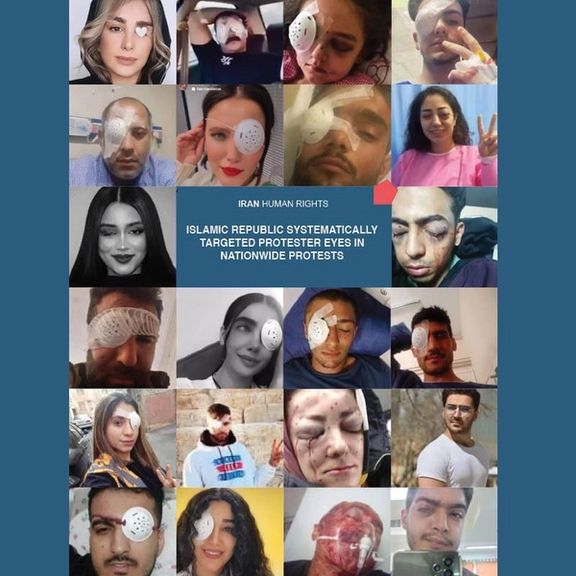
The report was released less than a week after the commander of Iranian special police units, Hassan Karami, denied “deliberate” shooting at sensitive parts of the protestors' bodies such as their eyes and heads. He claimed that "the performance of the special unit has shown it is not their intention to deal unprofessionally with people," noting, "I have so much confidence in the ability of the special forces that I have said many times if anyone can prove that even one person was killed due to a mistake by our staff, I will offer them a reward."
While the suppression of the nationwide protests against the Islamic Republic has so far left more than 500 citizens dead and thousands injured, Karami claimed, "The special unit forces have the ability and expertise to restore peace with the least cost and damage."
In November, over 370 ophthalmologists said that a large number of protesters have been taken to medical centers hit by rubber bullets and metal pellets as well as paintball bullets fired at them at close range during the protests, leading to the loss of eyesight in one or both eyes. They warned against the use of shotgun ‘birdshots’ and other projectiles by the security forces that have blinded over 500 protesters since mid-September.
In a November 19 report, The New York Times cited ophthalmologists of three hospitals in the capital Tehran – namely Farabi, Rasoul Akram and Labbafinezhad -- and several doctors in Kordestan province, as saying that about 580 protesters suffered serious eye injuries during the regime’s crackdown.
The full scope of numerous eye injuries has been largely concealed due to the internet blackout in Iran, but medical evidence given to the NYT by doctors, protesters, family members of patients and rights groups revealed that ophthalmology wards in hospitals were overwhelmed with eye injury victims late last year. The range of injuries included mutilated retinas, severed optic nerves and punctured irises.